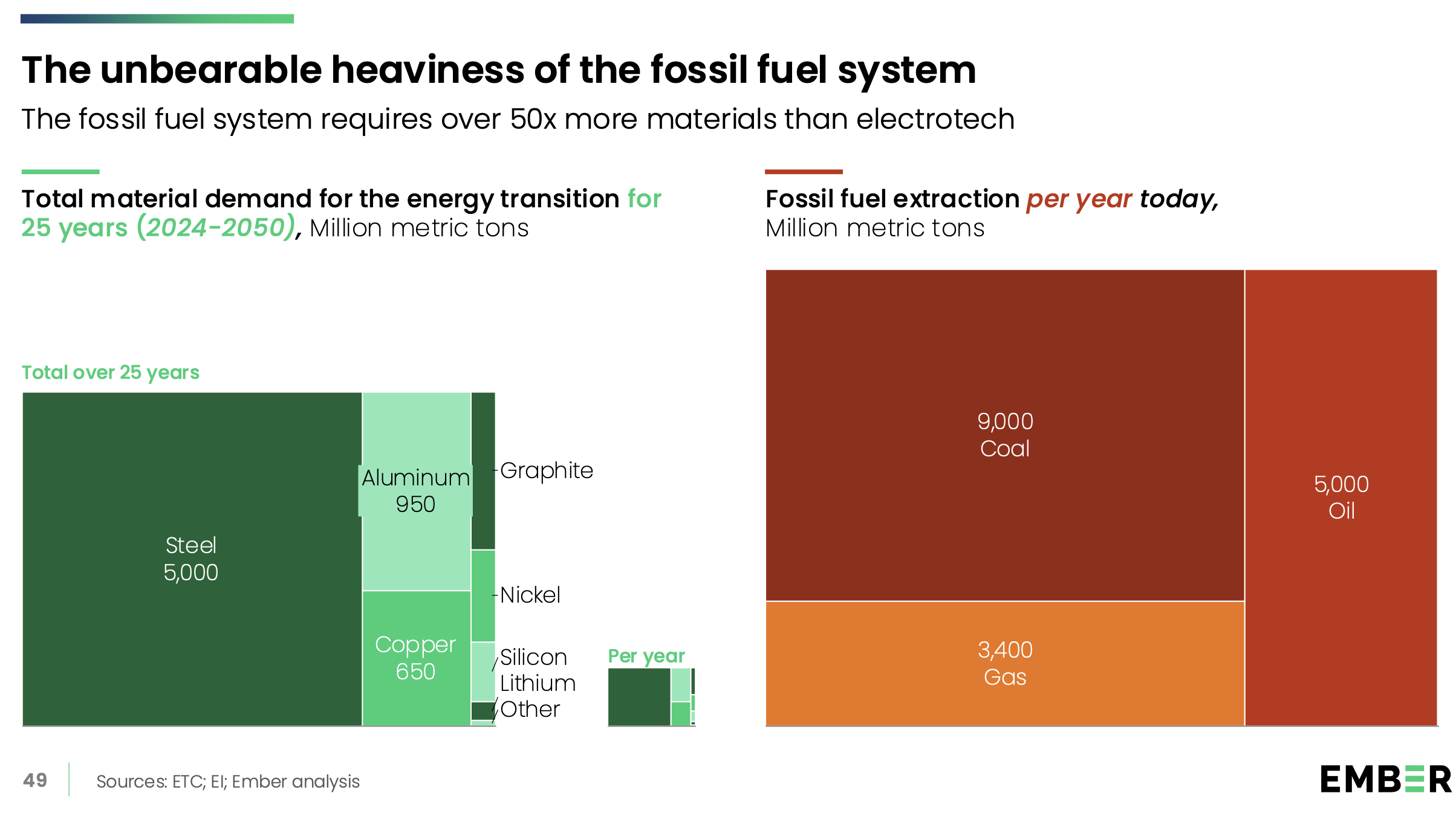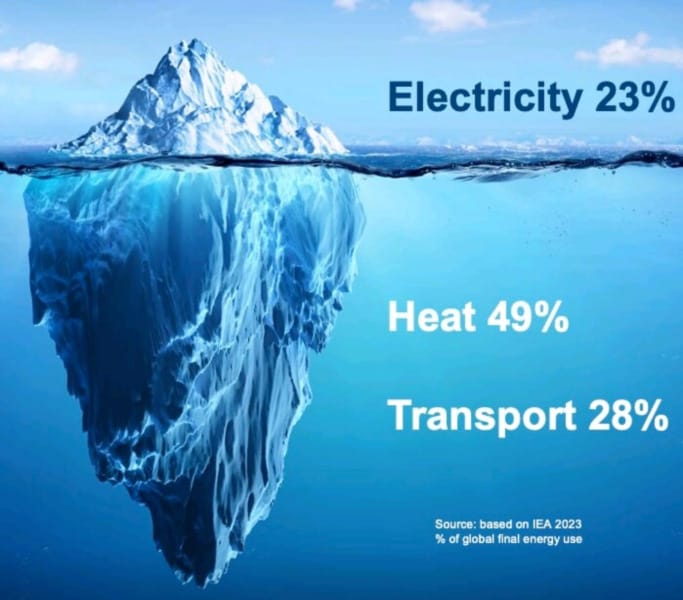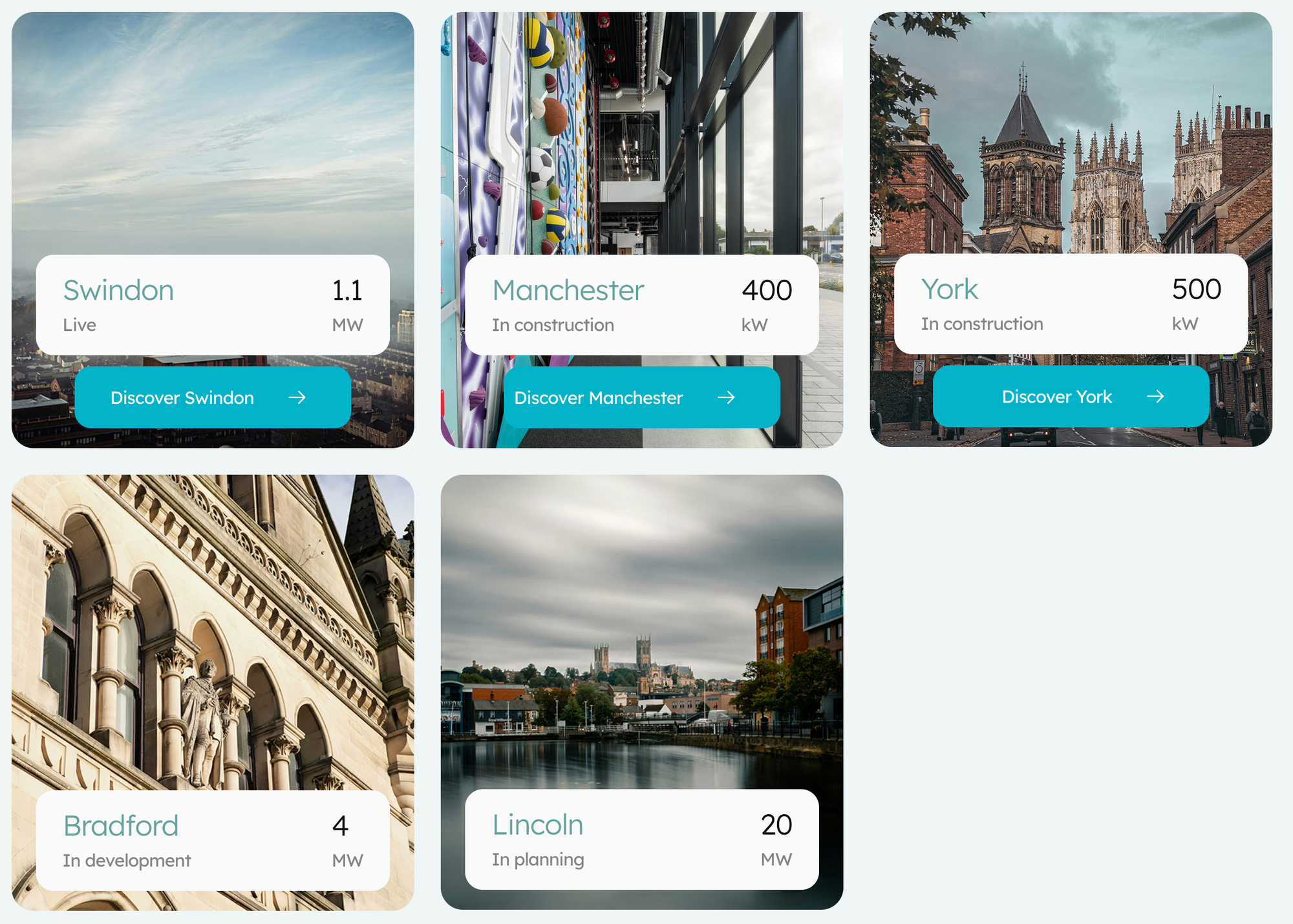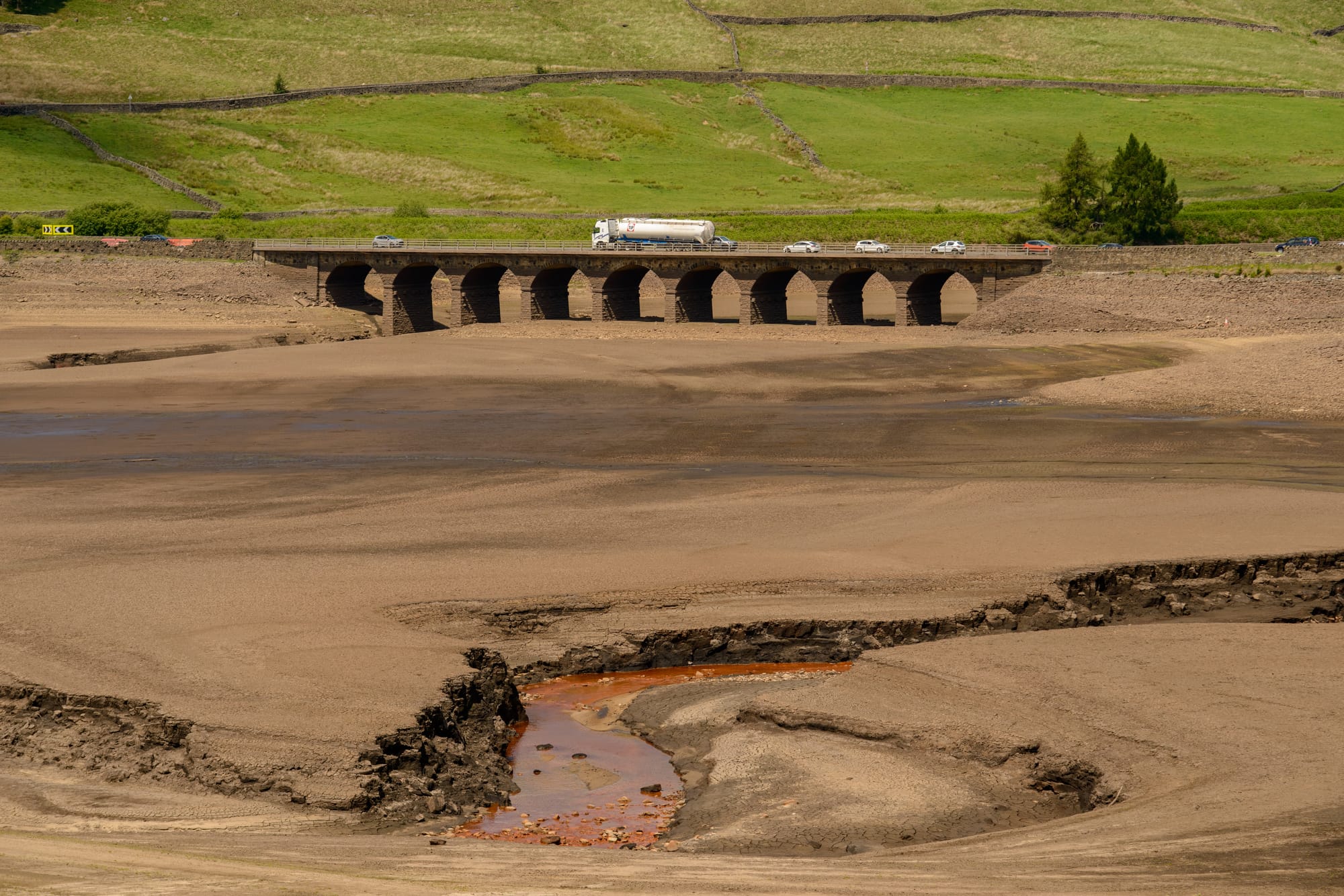Talking Climate Tech 042
🤬 Decades of Deceit | ⚖️ Heavy Fossil Fuels | ♨️ Data Centre Heat | 🥊 Trump v IMO + Wind | 👂 Survey | 📷 Climate Visuals

Here we go...your weekly action ▶️
🗞️ News Roundup
Decades of Deceit 🤬
Those concerned scientists, at The Union of Concerned Scientists’ have a new report, Decades of Deceit;
The report presents evidence that fossil fuel companies such as BP, Chevron, ExxonMobil, and Shell not only understood the risks of climate change as far back as the 1950s but worked to suppress that knowledge, mislead the public, and shape policy to preserve their profits. When you consider that over the half the world’s emissions are connected to just 36 fossil fuel companies, their influence on the subject is immense.
More background on the report. Forbes
The Unbearable Weight of Deceit ⚖️
Following on from the above, as we think about the cost, time and materials of the energy transition. It's never as much as you might think...
We are quickly dipping back into the excellent Ember Electrotech deck - this is a stunning piece of data.
The total material demand for 25 years of the energy transition to electricification.
Compared to fossil fuel extraction, PER YEAR. 🤯

SHIELD Up 🛡️
UK Power Networks’ SHIELD project aims to reduce energy bills for low-income households by 20-40% using low-carbon technologies like solar, battery storage, and HeatHub, a mini data centre that captures waste heat. The project will test the model nationwide, aiming for 100,000 installations per year by 2030.
UK startup, Thermify, will be delivering the in-home compute for heat recovery. Forecast project savings and specifics here. Energy Networks Association.
🔎 Deeper Dive
Compute to Heat ♨️
As you know, I like to talk about heat, a lot. It's a massive challenge, almost 50% plus of final energy use, and yet it's Transport and Power that get all the headlines. 🙄

Making best use of our heat resources, such as geothermal, mine water, waste water, rivers, industrial process etc etc, is critical to decarbonising heat and reducing load on the grid.
Beyond this, heat is what people feel. Getting heat to people, to reduce costs and fuel poverty, and make the energy transition 'felt' is critical to improve lives and deliver the benefits of the transition.
⚫ Home heating is 14% of UK carbon emissions
🥶 2024 est. 11.0% / 2.73 million households in fuel poverty in England
🥶 2023 est. 11/4% / 2.80 million households) in fuel poverty
🥶 Approximately 6 million people on average in fuel poverty
We have to do better. There are lots of ways we can, and are, moving this forward.
Data Centres are a key player in the current and future heat market - all the extra AI data centre growth forecast [how much will actually happen is another matter!] not only has massive power demands, big implications for water consumption [depending on cooling systems, another story], but also huge 'waste' heat potential.
There are all sorts of projects happening globally and locally here in the UK, which are starting to really deliver DC heat reuse. One of our UK champions is DeepGreen, now with investment by Octopus, is starting to scale decentralised data centres for heat offtake to district heating, swimming pools and other large heat users - best of all, they provide the heat for free!
Some of their active projects:

With the UK's push to scale heat networks - delivering 2% of heat currently to UK homes, targeted for 18% by 2050 - 26 cities are in the heat network zoning development programme. We need all the heat sources we can get our pipes on.
And in the EU, policy is driving projects forward;
Under the revised Energy Efficiency Directive (EED), if a data centre has a total rated energy input of 1MW or higher, it will be required to utilise its waste heat unless economically or technically unfeasible.
Let's see what is happening out there ⬇️
Nebius Data Centre - Mäntsälä, Finland
The facility recovers waste heat from servers using air-to-water heat exchangers, raising water temperature to 35-40 °C, then feeding into local heating networks. nebius
Tallaght District Heating Scheme - Dublin, Ireland
South Dublin County Council (Ireland) via Heat Works (the local not-for-profit utility) connected to an AWS data centre. Amazon
First large-scale district heating in Ireland using AWS data-centre waste heat; demonstrates community benefit and public-private energy infrastructure innovation.
Google - Hamina, Finland
Google is routing surplus heat from its Hamina data centre into the local district heating network to supply heat to households, schools and public buildings. Google
Microsoft - Høje-Taastrup, Denmark
A new Microsoft data centre under construction in Høje-Taastrup will supply excess heat to the local district heating network. The project is expected to produce enough heat to warm roughly 6,000 homes. Microsoft
It's not just district heat networks either - Agriculture is getting in on the act too for growing algae and crops in greenhouses and for insect farming. Information Week
It's not that easy to grow vegetables in Scandinavia, the season is pretty short.
Telecity Group established its Climate Change Arboretum, which aims to replicate the climatic conditions predicted for 2050, in Paris in 2010. It is warmed by waste heat from the company’s data center and aims to study how plants will react to climate change. The University of Notre Dame embarked on a similar initiative, using heat from a data center to heat a greenhouse in South Bend, Ind. Genesis, an energy company, has collaborated with the Luleå University of Technology and the Research Institutes of Sweden (RISE) as well as several local development agencies in Boden to create a greenhouse attached to one of its data centers there. And Containing Greens, a company based in Luleå, Sweden, grows microgreens hydroponically using data center waste heat.
We are enteringing the age of heat reuse at scale - it can't come soon enough!
💥 Trump Watch
Wind Wars 🚧
And so the fallout continues, last week it was Empire Wind. He will never let wind turbines out of his crosshairs afetr the refusal in Scotland to remove those inconvenient turbines polluting his view while on the golf course. 🙄
US Wind told a federal court that it will go bankrupt if President Donald Trump succeeds in revoking its building permits. The Baltimore-based developer testified on the fate of its 2.2-gigawatt Maryland Offshore Wind project in response to a lawsuit brought by the Department of the Interior and the City Council of Ocean City, Maryland. Reporting 4C Offshore
“If the plan is lost, surrendered, forfeited, revoked or otherwise not maintained in full force and effect, US Wind’s investors have the right to declare US Wind to be in default on the repayment of the company’s debt and/or refuse to extend the additional financing needed to complete construction of the project. Either of these consequences could result in US Wind’s bankruptcy.”
Shipping 💥💣💥
Last weeek a note on the IMO regulation on decarbonisation. This week confirmation that it has been torpedoed for now, despite support for the deal from the EU, UK, India, China and Brazil. Nice one Donald. FT

Watch up? ⌚
It's not all going Don's way. There is this, which is unsurprising and entirely reflective of the quality of the man, and his ongoing grift.

Ballroom Blitz 🏗️
Rember the $200m ballroom from a few weeks ago; the project is moving forward.
"It won't interfere with the current building. It won't be. It'll be near it but not touching it - and pays total respect to the existing building, which I'm the biggest fan of," ....Trump said in July.
Yeah, bit of an understatement. Not sure he got planning permission.

"Donors", buying a few bricks and a seat at the table, and perhaps some regulatory and tax benefits - Amazon, Apple, Google, HP, Microsft, Coinbase, Ripple, Winklevoss Twins, Comcast, Lockheed Martin, and the Glazer family. 😔
🏡 Konfab News
Talking Climate Tech Survey 01 👂
A reminder on the survey, if you could hit a few buttons after reading this week's digest, that would be amazing 🙏

😃 Good Stuff
Climate Visuals 📷
We talked about heat early. There is of course the other side of heat, too much. Sometimes the image says it all.

You might guess this is in a Southern Mediterranean location or similar, but no, its the UK.
Thanks for your time, interest and support as always, let's keep pushing forward - remember, the momentum is unstoppable despite everything you might see and hear! 🌍
Kane







